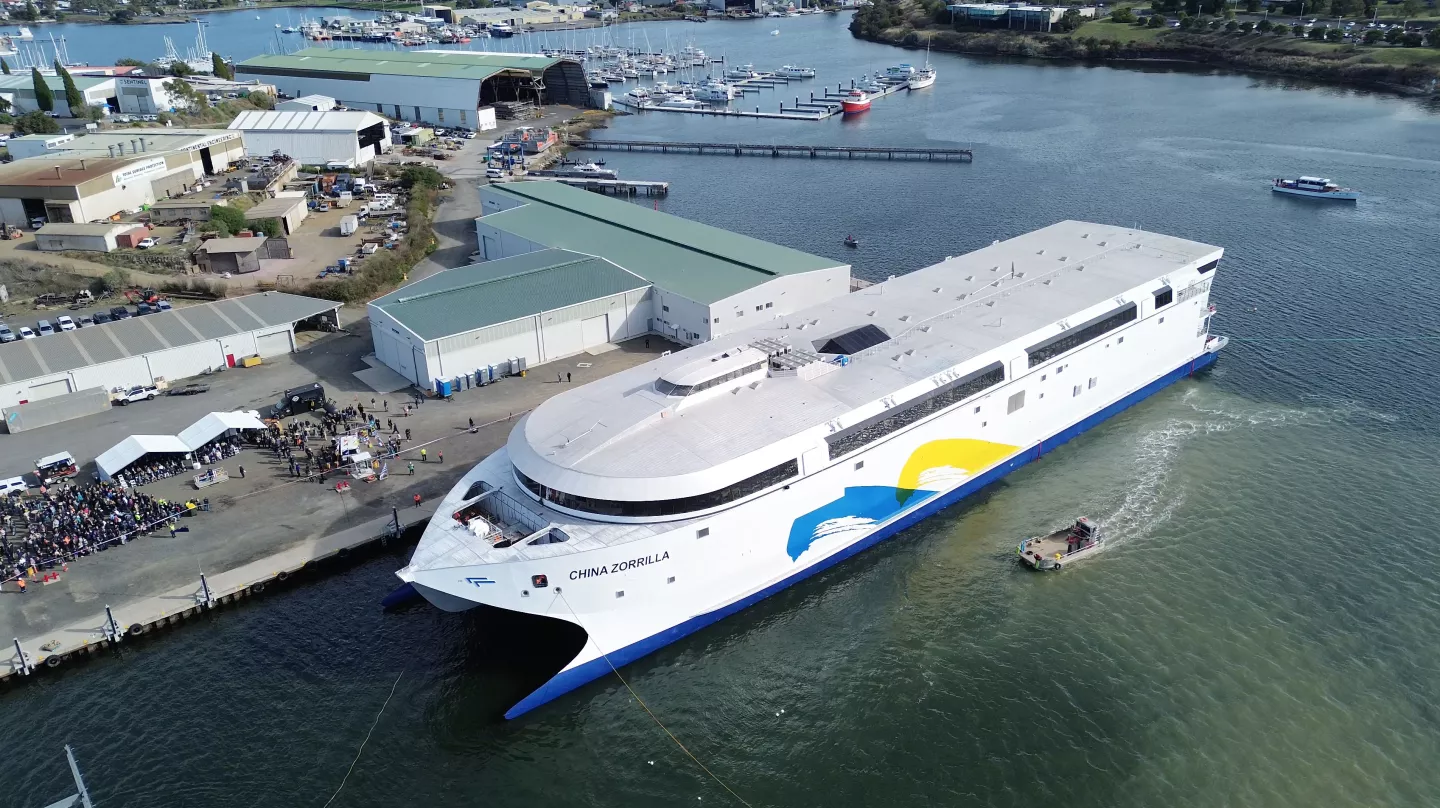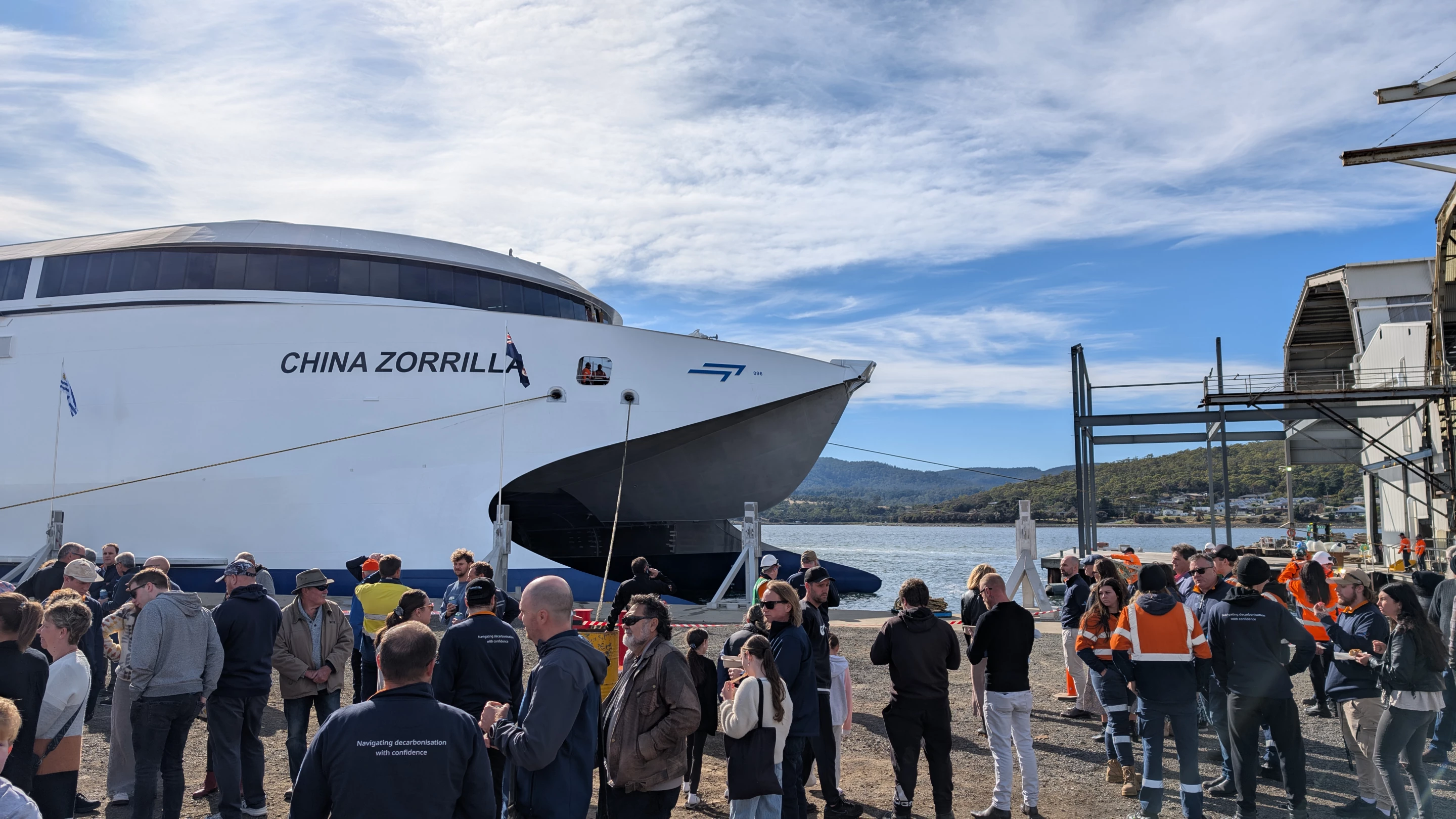Tasmania's Incat has delivered on its promise to build the world's largest battery electric passenger ferry, officially launching the China Zorrilla from its shipyard in Hobart today. The vessel measures 425 ft in length and will be home to a whopping 40-MWh battery.
"At 130 meters in length, Hull 096 is not only the largest electric ship in the world, but also the largest electric vehicle of its kind ever built – and one of the most significant single export items in Australia’s manufacturing history," boasts the press release on the launch.
The Hull 096's spec sheet reveals an overall length of 129.68 m (425.46 ft), a waterline length of 121.51 m (398.65 ft), and a beam of 32.36 m (106.17 ft). The original plan for the ninth vessel built for ferry operator Buquebus was for it to run on LNG, but Incat's chairman had other ideas.
"When we were evaluating this new vessel, Robert Clifford told me, 'The next ship I deliver to you will be 100% electric,'" revealed Juan Carlos López Mena, chairman of Buquebus. "I replied, ‘Then the next one must be the one we’re commissioning today.’ And with great courage, he said, ‘Together, we’re going to make history.’" Then work began on turning promise into reality and building the China Zorrilla to run emissions-free, you can watch key construction milestones in the video below.
Now the exterior is complete and has been treated to a fresh paint job for the official launch. The vessel's monstrous Energy Storage System has yet to be installed, but will add 250 tonnes to the ferry's dry weight, making it "four times larger than any previous maritime installation" according to Incat.
This ESS will power eight electric waterjets manufactured by Wärtsilä, which will push the e-ferry across the River Plate between Buenos Aires in Argentina to a port in Uruguay when it enters service. But before up to 2,100 passengers and 225 vehicles can get on board for the maiden voyage, work continues on the vessel's interior – which will host "the largest shopping space on any ferry in the world," at 2,300 sq m (24,750+ sq ft).

"This is a historic day – not just for Incat, but for the future of maritime transport," said Incat's chairman, Robert Clifford. "We’ve been building world-leading vessels here in Tasmania for more than four decades, and Hull 096 is the most ambitious, most complex, and most important project we’ve ever delivered. This ship changes the game."
Once everything is ship-shape, the 100% electric ferry will undergo sea trials on the River Derwent in Tasmania, with Incat reporting that everything is on track for delivery to Buquebus by the end of 2025.
Source: Incat







